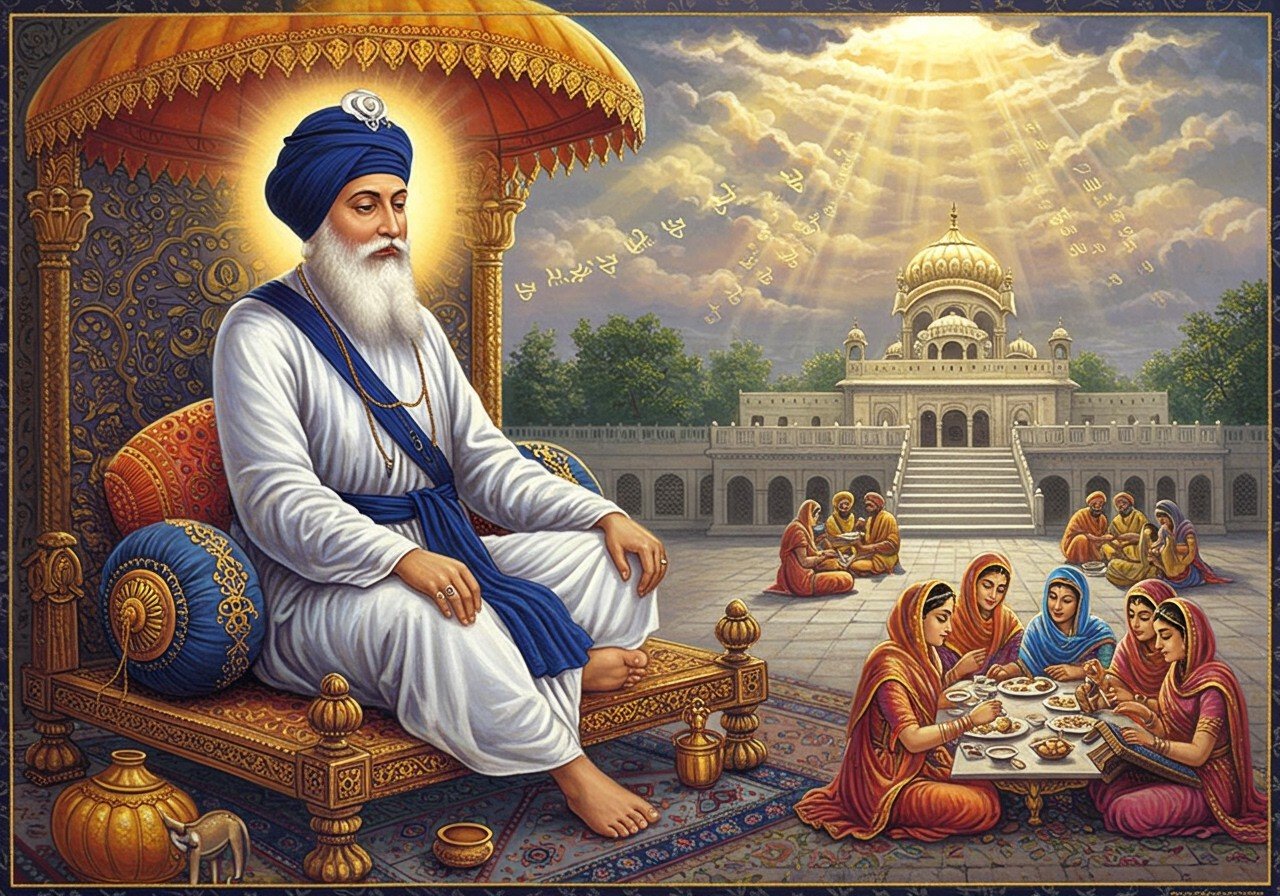
Guru Amar Das Ji, the third Sikh Guru, deeply influenced the evolution of Sikhism. Born in 1479 in Basarke Gillan, Punjab, he assumed the Guruship at the age of 73 and served for 22 years. His visionary leadership and reforms established a strong foundation for the Sikh faith, leaving an enduring legacy that continues to inspire followers today. Let’s delve into his remarkable contributions.
Guru Amar Das Ji’s Reforms in Sikhism
Guru Amar Das Ji introduced significant reforms that reshaped Sikhism. He challenged the rigid caste system, championing equality and social justice. He condemned practices like Sati (widow immolation) and Purdah (veiling of women), advocating for widow remarriage and women’s empowerment. His establishment of the Manji system, a decentralized administrative structure, was groundbreaking, facilitating the widespread dissemination of Sikh teachings across different regions. This system involved dividing the Sikh territory into 22 Manjis (dioceses), each overseen by a carefully chosen representative. This not only streamlined administration but also ensured that the Guru’s message reached far and wide, fostering a strong sense of community.
He also emphasized the importance of Langar, the community kitchen, ensuring that everyone, regardless of social standing, dined together. This practice fostered a sense of equality, community, and selfless service (Seva). By requiring everyone, even Emperors, to partake in Langar before meeting him, Guru Amar Das Ji effectively broke down social barriers and emphasized the equality of all before God. This simple act became a powerful symbol of unity and humility within the Sikh community.
Literary Contributions and Religious Texts
Guru Amar Das Ji enriched Sikh literature with his profound insights. His composition, Anand Sahib, a hymn of joy and spiritual bliss, holds a prominent place in the Guru Granth Sahib. This beautiful composition, often recited during Sikh ceremonies, expresses the bliss of union with the divine. He meticulously compiled the hymns of Guru Nanak Dev Ji and Guru Angad Dev Ji, adding his own compositions to create an early version of Sikh scripture, which eventually evolved into the Guru Granth Sahib. His teachings on meditation and the remembrance of God’s name (Naam Simran) became central practices in Sikhism, providing a pathway to spiritual growth and connection with the divine.
He composed a remarkable 907 hymns in 17 Ragas, demonstrating his deep spiritual understanding and poetic talent. These hymns, enshrined in the Guru Granth Sahib, offer guidance and solace to Sikhs around the world.
Institutional Developments and Infrastructure
Under Guru Amar Das Ji’s guidance, Goindwal Sahib flourished as a vital center for learning and pilgrimage. He developed Goindwal into a thriving city on the banks of the Beas River, complete with a well (Baoli Sahib) featuring 84 steps. This Baoli Sahib became not just a source of water but also a place of pilgrimage and contemplation. He commissioned the construction of the Baoli Sahib, a stepwell with 84 steps, fulfilling both spiritual and practical needs. This act of service provided access to clean water, a vital necessity, while also serving as a symbolic representation of the descent into deeper spiritual understanding. He initiated the Baisakhi festival, which is now a major celebration in the Sikh calendar. Baisakhi, originally a harvest festival, was transformed by Guru Amar Das Ji into a day of profound spiritual significance, commemorating the establishment of the Khalsa. These initiatives significantly strengthened the organizational framework of Sikhism, fostering a sense of community and shared identity. He laid the foundation for the concepts of Sangat (congregation) and Pangat (egalitarian eating), promoting a sense of belonging and equality among all members.
Promotion of Gender Equality
Guru Amar Das Ji’s advocacy for gender equality was revolutionary. He actively encouraged women to participate fully in religious activities and hold positions of authority within the Sikh community. He challenged discriminatory practices like female infanticide and the purdah system (veiling of women), promoting their dignity and respect. By appointing women as preachers and leaders, he empowered them to play an active role in the spiritual and social life of the community. These actions had a lasting impact on women’s status within Sikhism and Indian society as a whole. He vehemently opposed the practice of Sati (widow immolation), a prevalent social evil of the time, emphasizing the inherent value and dignity of women’s lives.
Legacy and Enduring Influence
Guru Amar Das Ji’s legacy continues to inspire and guide Sikhs worldwide. His teachings on Seva (selfless service) and the rejection of caste discrimination remain deeply influential. His vision of an egalitarian society resonates with contemporary discussions on social justice and equality. He introduced the Anand Karaj marriage ceremony, distinct from the Hindu rituals, further strengthening the unique identity of Sikhism. His spiritual and social reforms have profoundly shaped the identity and values of Sikhs, fostering a community committed to equality, compassion, and service to humanity. His emphasis on devotion, humility, and selfless service continue to guide Sikhs on their spiritual journey, reminding them of the importance of living a life grounded in faith and compassion.
A Complete Guide to Laddu Gopal
Tulsi Peeth Acharya Ramchandra Das and His Enduring Influence
Jyotiba Temple: A Spiritual Journey
Poojn.in offers a wide selection of spiritual and puja items, including Vamavarti Shankh, Achmani spoons, brass darpan, chandan tilak and Laddu Gopal murtis, allowing you to connect with your faith and honor the legacy of Guru Amar Das Ji.


